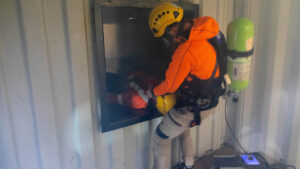New data from Safe Work Australia shows that older workers continue to be over-represented in fatal workplace falls from height.
It is no secret that falls from height are one of the most common mechanisms that result in fatalities at Australian workplaces. What makes it even more tragic is that despite the many improvements in safety systems and work practice that have been implemented over the last 20 years, that number has steadfastly remained high.
And for workers over 45, the statistics are even more dire.
Falls from height
Between 2003 and 2023, only twice have the number of workplace fatalities occurring because of a fall from height been below 20.
Although progress had been made in reducing the number of fatalities between 2010 and 2022, this trend has been abruptly reversed in 2023.
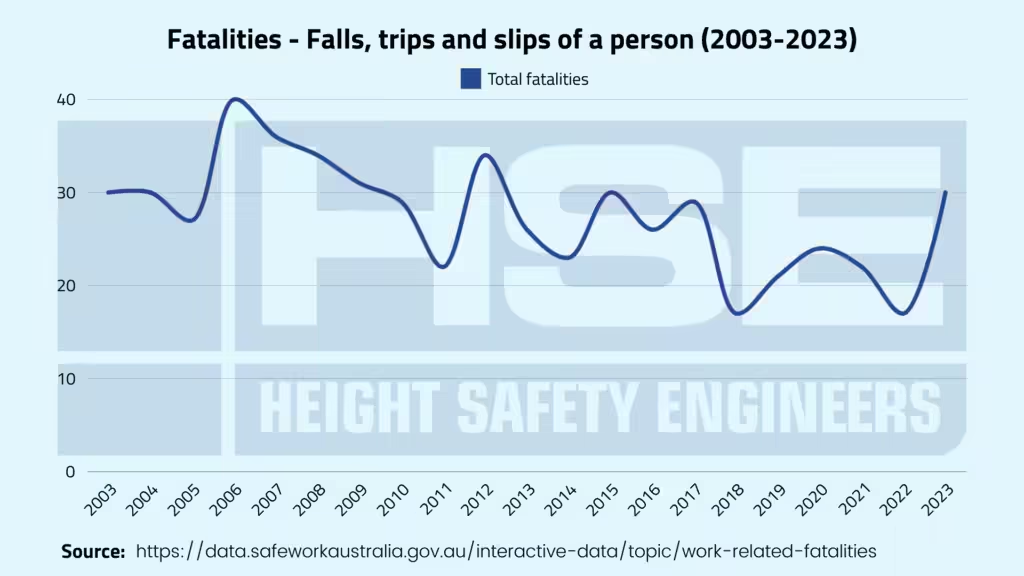
However, this does not paint the complete picture.
Age matters in falls from height
Older workers are involved in significantly greater number of fatal falls than younger workers.
Over the period between 2003 and 2023, workers aged 45 and over accounted for nearly 70% of all deaths occurring from falls, slips and trips of a person.
A fatal fall is more than twice as likely to involve a worker over 45 than it is one under 45.
Across the whole period looked at here, fatal falls involving younger works have been on a steady downward trend. From a high of 18 in 2006, there have been only 5 years where the number of fatalities has exceeded nine.
By contrast, for workers over 45, the number of fatalities has twice been lower than 15.
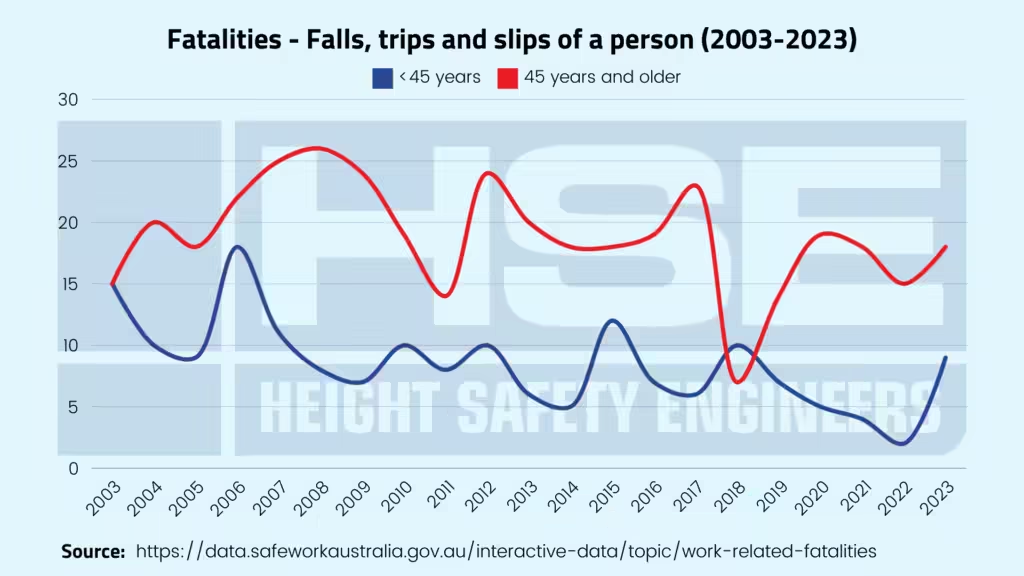
The difference is stark.
Makeup of the Australian workforce
The final piece of the puzzle, that drives home just how at-risk older works are, is their representation across the number employed persons in Australia.
From 2003 to 2022, the proportion of older workers increased from 35 to 40 per cent of total employed persons.
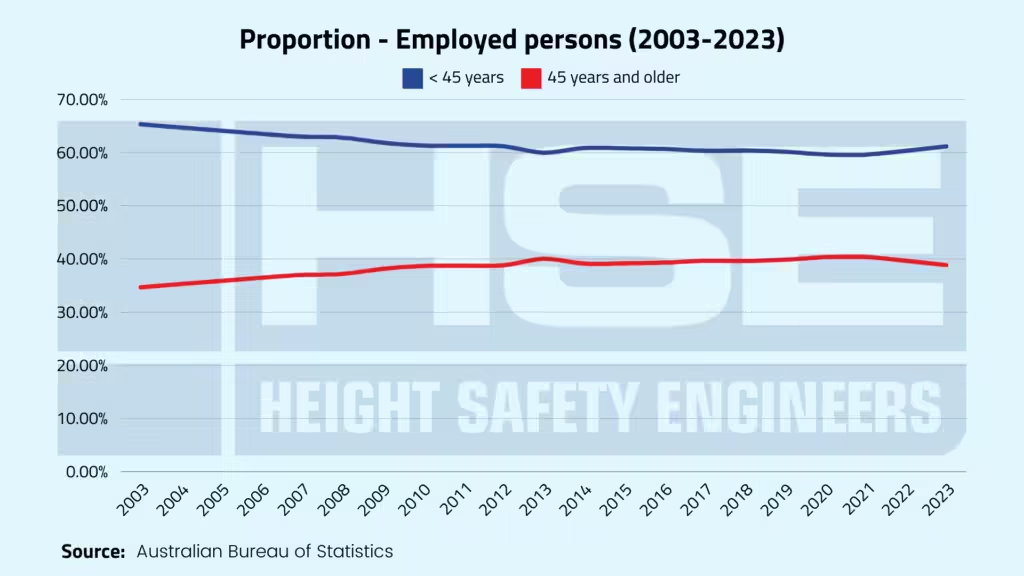
In that same period, the proportion of older workers involved in fatalities because of falls from height also increased from 50% to more than 80% in 2022.
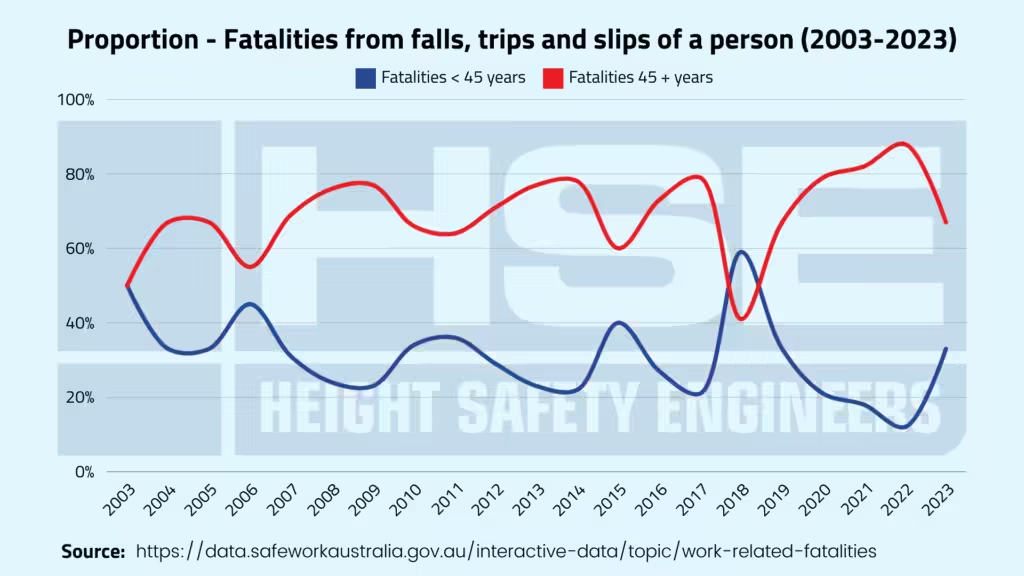
Older workers are far more likely to suffer a fatal fall from height than a younger worker. They make up less than 40% of workers, yet account for more than 60% of fatalities from falls.
Exploring the reasons behind the data
There are a few potential reasons why so many older workers are finding themselves involved in fatal falls from height.
Arguably the most common reason a fall from height occurs is complacency. Older workers have generally been working at heights for many, many years. This familiarity with working at heights and having been involved with it for long periods of time, often without a serious accident occurring, means that workers can become complacent about the risks that are involved.
Adding to this mix is resistance to change. For experienced workers, the way they have been working – the processes and equipment they use – can often be seen as the “only” way to do it. This attitude can mean that updated, safer equipment and procedures are not utilised by these workers. This can also increase the risks associated with an accident.
Another potential influence is the idea that more experienced workers are generally assigned work that carries with it a higher risk. This would mean that older workers would be more frequently working in higher-risk environments compared to younger, less experienced, workers.
Finally, it is important to understand the changes that the human body goes through as it ages. Eyesight deteriorates, reflexes dull and the general ability of the body to carry out movements and actions that it could at younger ages decreases. These combine to throw a significant variable into the mix when it comes to an older worker’s ability to keep themselves safe whilst working at height.
Protecting people
The reasons why poor decisions are made while working at height go beyond simply choosing not to be safe. This can include a lack of understanding about just how common working at height can be.
Having a holistic, compliant and well-considered set of safety systems, procedures and processes is an important part of protecting people. But that alone is not enough, and there are many other avenues that can be explored to make sure that workers are being kept safe while carrying out their jobs.
Equally as important has good safety systems is the development and ongoing fostering of a strong safety culture. Workplaces with good safety cultures reduce the likelihood that a poor safety decision is going to be made by workers. Creating a workplace where workers do not feel compelled to knowingly place themselves in danger for the sake of completing a job can be significantly influential in reducing the chances of an accident.
For older workers especially, part of that safety culture is understanding that was best practice 30 years ago may not be, and probably is not going to be, best practice now. Refresher training allows workers the opportunity to update their skills and learn new and safer ways of completing work at height.
Workplaces can also help support older workers’ ongoing wellbeing by assisting to facilitate a range of personal care needs – in much the same way machinery, tools and plant need to have ongoing maintenance to sustain operation. This can include improved job scheduling, allowances for health-related activities and appointments.
The experts in height safety
The team at Height Safety Engineers have been protecting those working at height and in high-risk environments for over 20 years.
From the design and installation of safe access and fall protection systems, to annual compliance inspections, safety audits and the supply of PPE our team are your partners in protecting people.
Start your safety journey with us by calling 1300 884 978, emailing enquiries@heightsafety.net or filling out the contact form on this page.



